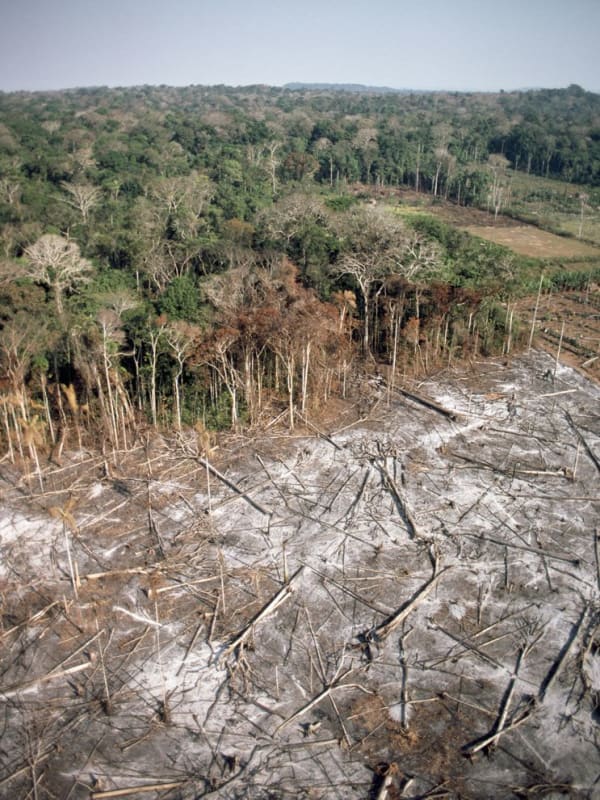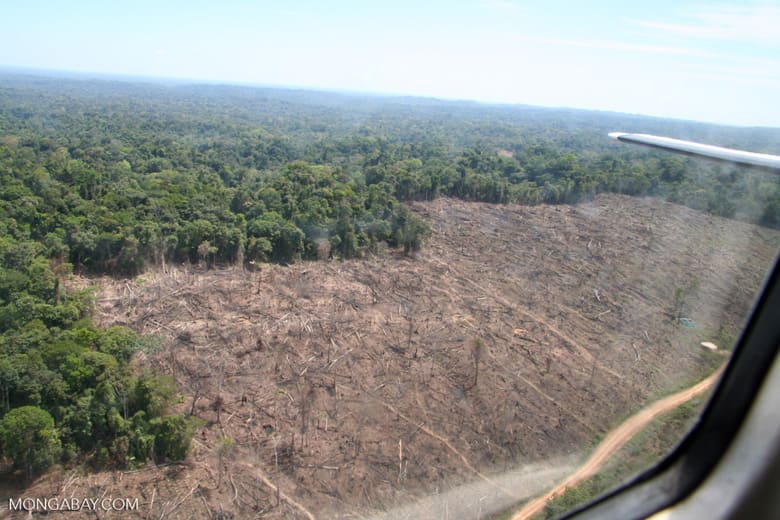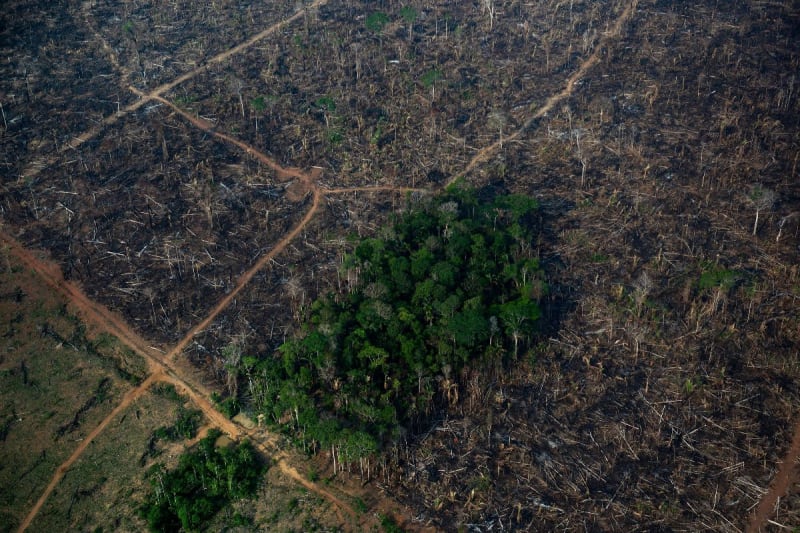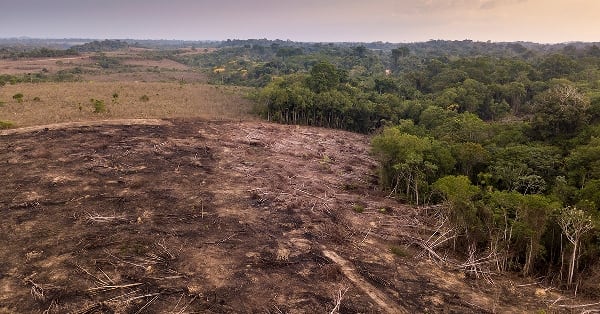Navigation
Install the app
How to install the app on iOS
Follow along with the video below to see how to install our site as a web app on your home screen.
Note: This feature may not be available in some browsers.
More options
Style variation
-
Congratulations cowski on being selected by the Eng-Tips community for having the most helpful posts in the forums last week. Way to Go!
You are using an out of date browser. It may not display this or other websites correctly.
You should upgrade or use an alternative browser.
You should upgrade or use an alternative browser.
How much land to replace fossil fuels with biofuels? 6
- Thread starter Tomfh
- Start date
- Status
- Not open for further replies.
-
1
- #2
SuperSalad
Chemical
Rough estimate? The bulk of land, and probably a good bulk of water as well.
- Andrew
- Andrew
-
1
- #4
Let's not forget that none of them are as efficient as the existing, which is why we use them. Additionally, there is the post processing required to make them usable as fuels, i.e., the equivalent of refineries for oil, so lots of acres devoted to lumber mills, ethanol fermentation/distillation, etc. Note that the current production energetics efficiency of ethanol is only about 68%
TTFN (ta ta for now)
I can do absolutely anything. I'm an expert! faq731-376 forum1529 Entire Forum list
TTFN (ta ta for now)
I can do absolutely anything. I'm an expert! faq731-376 forum1529 Entire Forum list
I don't know if this (growing trees for fuel) is a proposal being pushed by anyone, but I hope not !?
It sounds to me like another harebrained, not-well-thought-through idea someone had (at some inopportune moment).
What is the energy density of wood ? How much processing does it take to convert into a viable fuel ?
Is it better to consider it (growing trees) a carbon capture mechanism ?
another day in paradise, or is paradise one day closer ?
It sounds to me like another harebrained, not-well-thought-through idea someone had (at some inopportune moment).
What is the energy density of wood ? How much processing does it take to convert into a viable fuel ?
Is it better to consider it (growing trees) a carbon capture mechanism ?
another day in paradise, or is paradise one day closer ?
JoshPlumSE
Structural
A bit of a non sequitur, but I keep hearing about how 30% (or more) of the food bought in the US goes to waste and is thrown away. Not sure about the exact number, but it is shocking.
I wonder if it is possible / easy to convert this food waste into biofuels.
Once I read about a group of engineering students who converted their car to run off of vegetable oil. They'd drive around to various restaurants and ask for their oil waste. They'd get it and that's what powered their cars.
Not saying that it could be that easy. But, that there could be a good use for some of the huge amounts of wasted food products that we have here in the USA.
I wonder if it is possible / easy to convert this food waste into biofuels.
Once I read about a group of engineering students who converted their car to run off of vegetable oil. They'd drive around to various restaurants and ask for their oil waste. They'd get it and that's what powered their cars.
Not saying that it could be that easy. But, that there could be a good use for some of the huge amounts of wasted food products that we have here in the USA.
enginesrus
Mechanical
No reason to grow trees for fuel, there are already thousands of acres of trees. All that needs to be done is use tractors/ bulldozers with rakes to rake up all the under growth in forests, selectively log etc.
Lets not waste farm land for engine fuel, that is for feeding living creatures.
Lets not waste farm land for engine fuel, that is for feeding living creatures.
A bit of a non sequitur, but I keep hearing about how 30% (or more) of the food bought in the US goes to waste and is thrown away. Not sure about the exact number, but it is shocking.
I'm not surprised; the American shopper has gotten extremely picky about cosmetic appearance of fruits and vegetables, even though most of our fruits and vegetables have been genetically selected for durability, ala Camarosa strawberries, which are near bulletproof, but lack the sweetness of less robust varieties like Chandler. The issue, though, is that the waste is at the point of sale, and it's all mixed together and requires an enormous infrastructure to collect and process as fuel. Ethanol production only works as well as it does because it's collected at the farm side of the equation.
TTFN (ta ta for now)
I can do absolutely anything. I'm an expert! faq731-376 forum1529 Entire Forum list
-
1
- #9
Guest
enginesrus said:No reason to grow trees for fuel, there are already thousands of acres of trees. All that needs to be done is use tractors/ bulldozers with rakes to rake up all the under growth in forests, selectively log etc.
No sooner said than done.




"Everyone is entitled to their own opinions, but they are not entitled to their own facts."
GregLocock
Automotive
Yes, near here are vast gum and conifer plantations that are clear felled at 40-60 years old, and it does look like a moonscape. They are very careful to leave a screen of trees alongside the roads otherwise the tourists get upset. Now fair enough if all this wood was being made into beautiful furniture, sadly most of it ends up as wood pulp for paper, or chips to be turned into MDF or chipboard (overseas) and made into the sort of furniture you see dumped at the side of the road after 10 years.
Cheers
Greg Locock
New here? Try reading these, they might help FAQ731-376
Cheers
Greg Locock
New here? Try reading these, they might help FAQ731-376
BrianPetersen
Mechanical
I know it's wikipedia but still ...
Contains calculations about yield of a proposed palm oil plantation in Hawaii ... 600 (presumably US) gallons of biodiesel per acre per year.
If one were to operate a reasonably efficient diesel car on that, it's in the ballpark of what an average person drives per year.
To operate 100 million such vehicles one would need 100 million acres with Hawaii-level amounts of sunlight. That's 156,000 square miles. That's roughly the entire area of the state of California. Bear in mind that it would be nice to be able to eat, too. And not all land is suitable for growing and harvesting crops. And crops need fresh water, which is also in short supply out west.
The energy conversion efficiency isn't high enough to make this viable.
It's all well and good to convert waste products into fuel (e.g. biodiesel from cooking oil).
Contains calculations about yield of a proposed palm oil plantation in Hawaii ... 600 (presumably US) gallons of biodiesel per acre per year.
If one were to operate a reasonably efficient diesel car on that, it's in the ballpark of what an average person drives per year.
To operate 100 million such vehicles one would need 100 million acres with Hawaii-level amounts of sunlight. That's 156,000 square miles. That's roughly the entire area of the state of California. Bear in mind that it would be nice to be able to eat, too. And not all land is suitable for growing and harvesting crops. And crops need fresh water, which is also in short supply out west.
The energy conversion efficiency isn't high enough to make this viable.
It's all well and good to convert waste products into fuel (e.g. biodiesel from cooking oil).
"How much land to replace fossil fuels with biofuels?"
I'll take a stab at it: Warning - Data from Google - may be dodgy
Per US Energy Information Agency, 2020: Consumption from petroleum, 32.23 quadrillion BTU or average over the year, 3.68 E12 BTU / hr
1 watt = 3.41 BTU / hr, so 1.08 E12 watt.
Per David MacKay (Without Hot Air), power available from land area is 0.5 w / m^2 (tops), so land area needed is 2.16 E12 m^2 or at 0.0001 hectare per m^2, 2.16 E8 ha.
Per USGS net US net cropland is 166 E6 ha, or, just about 130% net cropland.
Not counting further losses. All fuel, no food.
Regards,
Mike
The problem with sloppy work is that the supply FAR EXCEEDS the demand
I'll take a stab at it: Warning - Data from Google - may be dodgy
Per US Energy Information Agency, 2020: Consumption from petroleum, 32.23 quadrillion BTU or average over the year, 3.68 E12 BTU / hr
1 watt = 3.41 BTU / hr, so 1.08 E12 watt.
Per David MacKay (Without Hot Air), power available from land area is 0.5 w / m^2 (tops), so land area needed is 2.16 E12 m^2 or at 0.0001 hectare per m^2, 2.16 E8 ha.
Per USGS net US net cropland is 166 E6 ha, or, just about 130% net cropland.
Not counting further losses. All fuel, no food.
Regards,
Mike
The problem with sloppy work is that the supply FAR EXCEEDS the demand
thermionic1
Electrical
"I wonder if it is possible / easy to convert this food waste into biofuels."
We had a partnership in my town between the casino and InSinkErator (Emerson) that collected the waste from the faculties and used a digester to create methane to burn in a recip engine. IIRC, it lasted only a few years before they shut it down. I have no idea why.
Not exactly the same, but similar.
We had a partnership in my town between the casino and InSinkErator (Emerson) that collected the waste from the faculties and used a digester to create methane to burn in a recip engine. IIRC, it lasted only a few years before they shut it down. I have no idea why.
Not exactly the same, but similar.
- Thread starter
- #14
rb1957 said:I don't know if this (growing trees for fuel) is a proposal being pushed by anyone, but I hope not !?
It sounds to me like another harebrained, not-well-thought-through idea someone had (at some inopportune moment).
What is the energy density of wood ?
Wood pellets as fuel instead of burning coal is common now. It's considered renewable. The efficiency is worse than coal. It has something like 1.5x the CO2 emissions for the same amount of energy extracted. But because it came from a tree, not coal, they don't count the CO2 the same way, and thus say it's much cleaner. Cutting down living forests and burning them is much greener than burning long dead forests, see?
Salad said:Rough estimate? The bulk of land, and probably a good bulk of water as well.
Yes I'm just interested in a rough estimate. I'm curious how much of the earth would need to be dedicated to fuel production if we were to maintain our current energy usage, and swapped fossil fuels for biofuels. E.g. if we stopped using them for climate change reasons, or if we simply ran out.
SnTman said:Per USGS net US net cropland is 166 E6 ha, or, just about 130% net cropland.
Thanks for the estimate.
That wasn't me, but that's OK. I've seen clear cut regions in northern California, and even after 100 years, it's still a moonscape; that would be my fear for any such endeavor. The trees need to be well-grown before cutting them for wood, and the trunks would need to be cleared away before new growth can be sustained.
TTFN (ta ta for now)
I can do absolutely anything. I'm an expert! faq731-376 forum1529 Entire Forum list
TTFN (ta ta for now)
I can do absolutely anything. I'm an expert! faq731-376 forum1529 Entire Forum list
LionelHutz
Electrical
Shrug. I've seen old super 8 video of areas north of where I live that were quite heavily clear cut about 50-60 years ago. They're back to well grown bush again.
-
2
- #17
Wouldn't it be much neater to have a few compact, robust, reliable nuclear power plants.... and run them for 40 or 50 years... ?
... and that provide 24/7 power even in weather emergencies that cripple the output of wind tubines and solar plants ?
... and that only need refueling every 12-16 months ?
... and that emit virtually ZERO Carbon Dioxide ?
- ....... WELL ?????
- NAAAAAAAAA !!!!!... It makes far more sense to strip mine West Virgina, turn beautiful forests into wastelands and run around with trucks and collection baskets to try to collect every goddamn half-eaten twinkie
MJCronin
Sr. Process Engineer
... and that provide 24/7 power even in weather emergencies that cripple the output of wind tubines and solar plants ?
... and that only need refueling every 12-16 months ?
... and that emit virtually ZERO Carbon Dioxide ?
- ....... WELL ?????
- NAAAAAAAAA !!!!!... It makes far more sense to strip mine West Virgina, turn beautiful forests into wastelands and run around with trucks and collection baskets to try to collect every goddamn half-eaten twinkie
MJCronin
Sr. Process Engineer
Shrug. I've seen old super 8 video of areas north of where I live that were quite heavily clear cut about 50-60 years ago. They're back to well grown bush again.
But, few, if any, trees?
TTFN (ta ta for now)
I can do absolutely anything. I'm an expert! faq731-376 forum1529 Entire Forum list
LionelHutz
Electrical
But, few, if any, trees?
Lots of trees. You would hardly know it was clear cut years ago. Soft wood is about all that would grow well in that area, and 50-60 years grows decent size softwood.
I would have commented on the original question, but it was already answered - all the land would be required and it'd still fall short.
- Thread starter
- #20
- Status
- Not open for further replies.
Similar threads
- Locked
- Question
- Replies
- 18
- Views
- 7K
- Replies
- 12
- Views
- 2K
- Replies
- 4
- Views
- 3K
- Replies
- 163
- Views
- 88K
